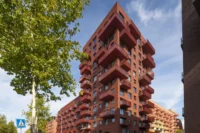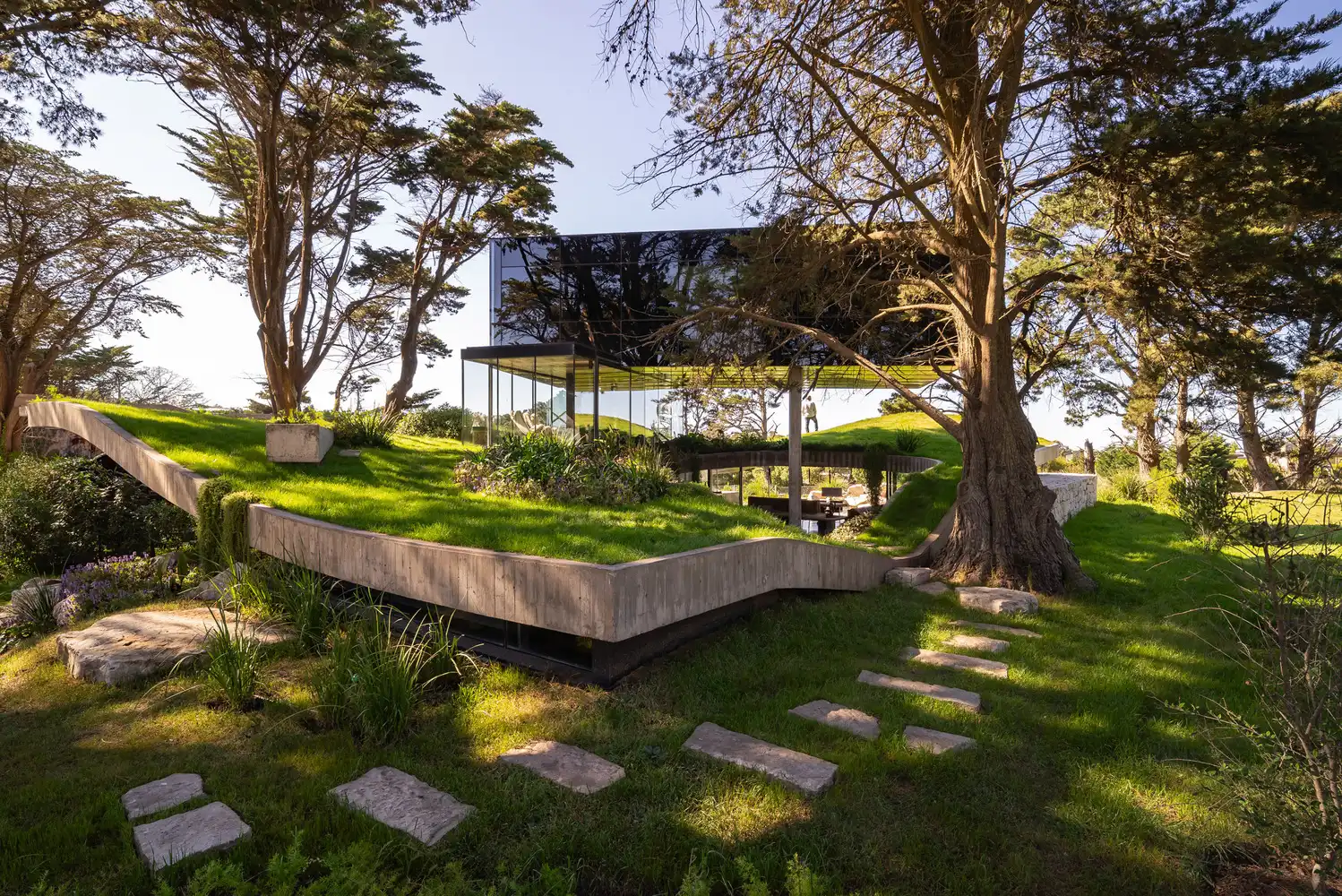Larrea Houses is a thoughtful residential project composed of two distinct yet interconnected homes designed to respond to the evolving needs of a modern family. This project explores collective housing as an alternative to traditional single-family dwellings, reflecting contemporary shifts in how families live, support one another, and share resources. Situated with the aim to foster community without compromising individual autonomy, Larrea Houses accommodates an extended family—comprising an elderly couple and a mother with two children—who seek a living arrangement that embraces both proximity and privacy.
The architecture challenges the inertia of conventional housing typologies by proposing a spatial organization that promotes coexistence, mutual care, and social richness within a framework that respects personal boundaries.
“Architecture must enrich life, both in its collective and individual dimensions.” — Peter Zumthor

Responding to Contemporary Family Dynamics
Modern family structures are diverse and dynamic, requiring architectural solutions that adapt to shifting patterns of daily life. Larrea Houses embraces this reality by supporting two nuclear families under one overarching umbrella, encouraging collaboration and connection while allowing each household to maintain its own rhythm and privacy.
The design reflects a deep understanding of the social and emotional fabric of extended families. It anticipates needs for security, companionship, and mutual support—elements that become increasingly important as family members age or face life’s unpredictable moments.
Through its configuration, the project offers a flexible and adaptive environment in which inhabitants can calibrate their social exposure. This flexibility not only enriches the everyday experience but also fosters resilience and wellbeing for all generations.

Spatial Organization: The Language of Voids and Connections
Central to the design philosophy are two primary voids—the entrance patio and the social patio—which structure the relationship between the homes and define the balance between private and communal space.
-
The Entrance Patio functions as both a connector and separator. It houses the main entrances of both homes, acting as a transitional threshold that allows for casual encounters and subtle interactions among family members. This space offers a neutral ground where paths cross naturally, fostering serendipitous social moments while maintaining clear boundaries between the two households.
-
The Social Patio is a deliberately crafted communal space that encourages intentional socializing and shared experiences. Featuring a barbecue area and swimming pool, it serves as the heart of family life—a place where celebrations, conversations, and leisure activities take place. This space encourages interaction while strengthening familial bonds and creating lasting shared memories.
Together, these patios embody the architectural expression of solid and void, openness and enclosure, connection and privacy—a nuanced interplay that animates daily life within Larrea Houses.
“Space is structured according to life, to the way people live and relate.” — Álvaro Siza

Materiality and Design Details
The architectural language of Larrea Houses reflects a warm, tactile material palette that enhances its domestic and collective qualities. The buildings employ natural finishes that resonate with the surrounding environment and provide sensory richness, promoting a sense of comfort and belonging.
The design’s attention to detail extends to the relationship between interior and exterior spaces. Large openings and visual connections toward the patios invite natural light and fresh air, blurring the boundary between inside and outside. This integration promotes a healthy, dynamic living environment, where spatial flexibility and the rhythms of nature coalesce.
Adaptability and Lifestyle
Larrea Houses offers a spatial framework that adapts to the changing needs of its residents over time. The two-family arrangement allows for degrees of interaction and withdrawal, supporting a lifestyle that can evolve with family growth, health, and social preferences.
This adaptability reflects a broader cultural shift toward cooperative living and resource sharing, which can foster sustainability and social resilience. The design provides a model for how architecture can actively support the psychological and social wellbeing of families through thoughtful spatial organization.

Recognition and Impact
In 2024, Larrea Houses received the Third Prize in the Multifamily Housing under 4 Levels category at the CAPBA Award, highlighting its innovative approach to collective residential architecture. This accolade recognizes the project’s contribution to redefining family living through architecture that is socially conscious, flexible, and deeply human-centered.
Conclusion
Larrea Houses stands as a compelling example of how architecture can respond to the complex, multifaceted nature of contemporary family life. By seamlessly weaving together private retreats and communal spaces, it encourages meaningful connections while honoring individual autonomy. The project offers a blueprint for future housing models that embrace coexistence as a vital ingredient of enriched, sustainable living.
This approach not only elevates the quality of life for residents but also creates a vibrant, adaptable home where architecture truly becomes a facilitator of relationships, memories, and everyday happiness.
Photography: Ramiro Sosa
- Adaptive Housing Solutions
- Álvaro Siza Inspired
- CAPBA Award Winner
- Collective Housing
- community-focused architecture
- Family Living Architecture
- Flexible Family Homes
- Indoor-Outdoor Integration
- Interconnected Homes
- Modern Family Housing
- Multi-Generational Living
- Multifamily Residence Design
- Peter Zumthor Philosophy
- Private and Communal Space
- Residential Architecture 2024
- Residential Architecture Innovation
- Social Patio Design
- Spatial Organization in Housing
- Sustainable Living Spaces
- Warm Material Palette
























































Leave a comment